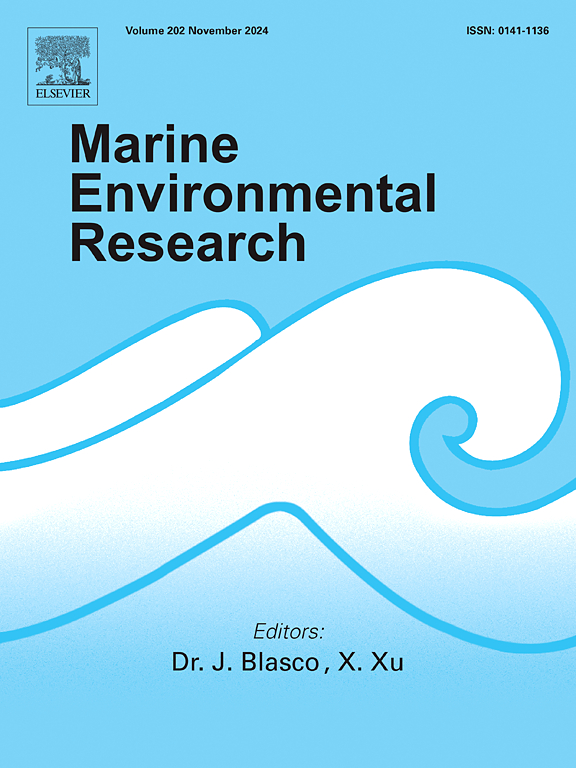Seasonal nutrient loadings in four monsoonal micro/meso tidal tropical estuaries, west coast of India
IF 3
3区 环境科学与生态学
Q2 ENVIRONMENTAL SCIENCES
引用次数: 0
Abstract
Nutrient concentrations were studied seasonally along estuarine and fluvial regions of four micro/meso tidal rivers from Karnataka and Maharashtra, west coast of India. This study was performed to assess the pathway of nutrients across the salinity gradients and evaluate the impacts of weathering and human activity on nutrient concentrations. The rivers of Maharashtra had phosphate concentrations several orders of magnitude higher than the rivers of Karnataka. Nutrient vs salinity plots suggest nutrient addition for Maharashtra rivers and removal in Karnataka rivers. The nutrients in the Karnataka rivers were mostly affected by sewage outfall and anthropogenic activities (industries), while in the Maharashtra rivers, it was influenced by fertilizer application and wastewater discharge. The seasonal nutrient distribution suggests nutrient loadings occurred from the catchments during the wet (monsoon) season in all the rivers. Significant deviations from the Redfield ratio implied occurrences of algal blooms which could threaten those ecosystems.
印度西海岸四个季风微/中潮热带河口的季节性营养负荷。
对印度西海岸卡纳塔克邦和马哈拉施特拉邦四条微/中潮汐河流的河口和河川地区的营养物质浓度进行了季节性研究。这项研究的目的是评估营养物质跨越盐度梯度的途径,并评估风化和人类活动对营养物质浓度的影响。马哈拉施特拉邦河流的磷酸盐浓度比卡纳塔克邦河流高出几个数量级。养分与盐度对比图显示,马哈拉施特拉邦河流的养分增加了,而卡纳塔克邦河流的养分则减少了。卡纳塔克邦河流的养分主要受污水排放口和人为活动(工业)的影响,而马哈拉施特拉邦河流的养分则受施肥和废水排放的影响。养分的季节性分布表明,所有河流的养分负荷都来自雨季(季风季节)的集水区。雷德菲尔德比率的显著偏差意味着藻类大量繁殖,这可能会威胁到这些生态系统。
本文章由计算机程序翻译,如有差异,请以英文原文为准。
求助全文
约1分钟内获得全文
求助全文
来源期刊

Marine environmental research
环境科学-毒理学
CiteScore
5.90
自引率
3.00%
发文量
217
审稿时长
46 days
期刊介绍:
Marine Environmental Research publishes original research papers on chemical, physical, and biological interactions in the oceans and coastal waters. The journal serves as a forum for new information on biology, chemistry, and toxicology and syntheses that advance understanding of marine environmental processes.
Submission of multidisciplinary studies is encouraged. Studies that utilize experimental approaches to clarify the roles of anthropogenic and natural causes of changes in marine ecosystems are especially welcome, as are those studies that represent new developments of a theoretical or conceptual aspect of marine science. All papers published in this journal are reviewed by qualified peers prior to acceptance and publication. Examples of topics considered to be appropriate for the journal include, but are not limited to, the following:
– The extent, persistence, and consequences of change and the recovery from such change in natural marine systems
– The biochemical, physiological, and ecological consequences of contaminants to marine organisms and ecosystems
– The biogeochemistry of naturally occurring and anthropogenic substances
– Models that describe and predict the above processes
– Monitoring studies, to the extent that their results provide new information on functional processes
– Methodological papers describing improved quantitative techniques for the marine sciences.
 求助内容:
求助内容: 应助结果提醒方式:
应助结果提醒方式:


